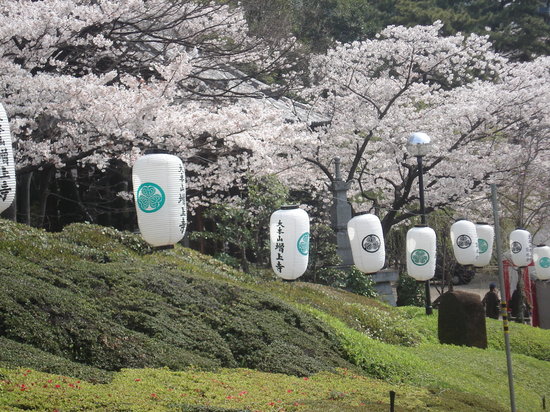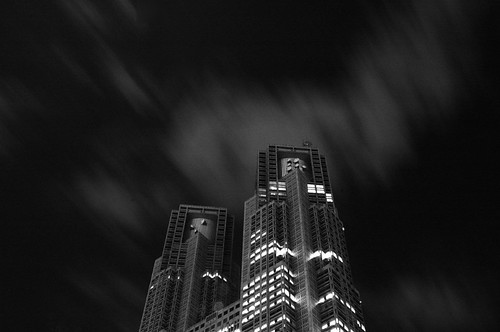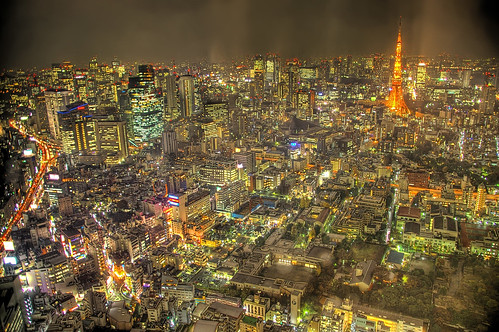Visiting Tokyo for the first time can feel like visiting another planet. Tokyo is very different from Western capitals, but what really sets it apart are its people. With a growing population of over 12 million within 1,300 square kilometres, Tokyo is Japan’s largest and most densely populated city; a bustling, state-of-the-art marketplace full of energy, humanity and astonishing contrasts.
Millions of people pack the subways, sidewalks, and stores to maximum capacity every day and every hour. In some parts of the city, the streets are as crowded at 3am as they are at 3pm. With its full-force, sensory overload, Tokyo makes even New York City seem like a sleepy town.
Despite its limited space for harmonious living, Tokyo remains one of the safest cities in the world, with very little crime or violence. People will go out of their way to help you. Hardworking, honest, and helpful to strangers, the Japanese people are Japan’s greatest asset.
Under Tokyo's concrete casing is a thriving cultural life. If you're interested in Japan's performing arts and traditional culture, Tokyo offers the most choice. It is full of museums, kabuki theatres, sumo wrestling and the largest collection of Japanese art in the world. Traditional kabuki thrives alongside opera, ballet and symphony, while Tokyo-dwellers are passionate about sumo, baseball and now football (soccer).
The capital city was founded in 1590 as Edo, the headquarters of the Shoguns, or military power. Edo boasted its own vibrant culture of pleasure quarters, theatres and cherry blossoms. Following the fall of the Shoguns in 1867 and the restoration of the Emperor’s power, the city was renamed Tokyo.
Tokyo consists of various districts, each with their own flair and flavour, usually centred around the main railway and subway stations. The city defines itself by its commercial, cultural, and entertainment centres of Ueno, Asakusa, Ginza, Roppongi, Shibuya, Harajuku, and Shinjuku.
Sinjuku, Shibuya, Ginza are large areas of commerce where the latest fashion trends are born and worn. Shinuya Station resembles New York City’s Time Square with enormous video screens and a sea of people and neon lights.
Ginza is home to top designer boutiques such as Chanel and Gucci, high-priced cups of coffee and the classic Kabukiza kabuki theatre. During the weekends Ginza’s Chuo Street is closed to traffic and becomes a festive swirl of shoppers and onlookers.
Tokyo Bay offers a bit of breathing space from the concrete jungle as does Shinjuku’s Gyoen Garden and Asakusa’s best kept secret – Dembo-in Garden. Of course, people do not visit Tokyo seeking peace and quiet. If it’s non-stop action that you are looking for, Tokyo is the place for you!
On the other hand, if you become overwhelmed, you can retreat to quiet cobble stone lanes and serene gardens for that sense of stillness that the Japanese have mastered for centuries.
The best time to visit Tokyo is in the spring from March to May when the cherry blossoms are blooming, inspiring sake-soaked picnics in the parks. However, try to avoid Golden Week (late April-early May) and New Year (late December-early January), because most of the city closes down. July and August bring sweltering heat and humidity, yet also host an array of lively festivals. Winter in the city is cold and crisp, while autumn (September to November) sees colourful foliage and warm, balmy days. Festivals are celebrated almost every week, offering visitors something of the old Japan to experience.
As Tokyo races into the future while honouring its past, the uniqueness of the city and its people provide visitors with an experience they will never forget.

















Millions of people pack the subways, sidewalks, and stores to maximum capacity every day and every hour. In some parts of the city, the streets are as crowded at 3am as they are at 3pm. With its full-force, sensory overload, Tokyo makes even New York City seem like a sleepy town.
Despite its limited space for harmonious living, Tokyo remains one of the safest cities in the world, with very little crime or violence. People will go out of their way to help you. Hardworking, honest, and helpful to strangers, the Japanese people are Japan’s greatest asset.
Under Tokyo's concrete casing is a thriving cultural life. If you're interested in Japan's performing arts and traditional culture, Tokyo offers the most choice. It is full of museums, kabuki theatres, sumo wrestling and the largest collection of Japanese art in the world. Traditional kabuki thrives alongside opera, ballet and symphony, while Tokyo-dwellers are passionate about sumo, baseball and now football (soccer).
The capital city was founded in 1590 as Edo, the headquarters of the Shoguns, or military power. Edo boasted its own vibrant culture of pleasure quarters, theatres and cherry blossoms. Following the fall of the Shoguns in 1867 and the restoration of the Emperor’s power, the city was renamed Tokyo.
Tokyo consists of various districts, each with their own flair and flavour, usually centred around the main railway and subway stations. The city defines itself by its commercial, cultural, and entertainment centres of Ueno, Asakusa, Ginza, Roppongi, Shibuya, Harajuku, and Shinjuku.
Sinjuku, Shibuya, Ginza are large areas of commerce where the latest fashion trends are born and worn. Shinuya Station resembles New York City’s Time Square with enormous video screens and a sea of people and neon lights.
Ginza is home to top designer boutiques such as Chanel and Gucci, high-priced cups of coffee and the classic Kabukiza kabuki theatre. During the weekends Ginza’s Chuo Street is closed to traffic and becomes a festive swirl of shoppers and onlookers.
Tokyo Bay offers a bit of breathing space from the concrete jungle as does Shinjuku’s Gyoen Garden and Asakusa’s best kept secret – Dembo-in Garden. Of course, people do not visit Tokyo seeking peace and quiet. If it’s non-stop action that you are looking for, Tokyo is the place for you!
On the other hand, if you become overwhelmed, you can retreat to quiet cobble stone lanes and serene gardens for that sense of stillness that the Japanese have mastered for centuries.
The best time to visit Tokyo is in the spring from March to May when the cherry blossoms are blooming, inspiring sake-soaked picnics in the parks. However, try to avoid Golden Week (late April-early May) and New Year (late December-early January), because most of the city closes down. July and August bring sweltering heat and humidity, yet also host an array of lively festivals. Winter in the city is cold and crisp, while autumn (September to November) sees colourful foliage and warm, balmy days. Festivals are celebrated almost every week, offering visitors something of the old Japan to experience.
As Tokyo races into the future while honouring its past, the uniqueness of the city and its people provide visitors with an experience they will never forget.




















 1:47 AM
1:47 AM
 crkota
crkota







 Posted in:
Posted in: 

0 comments:
Post a Comment